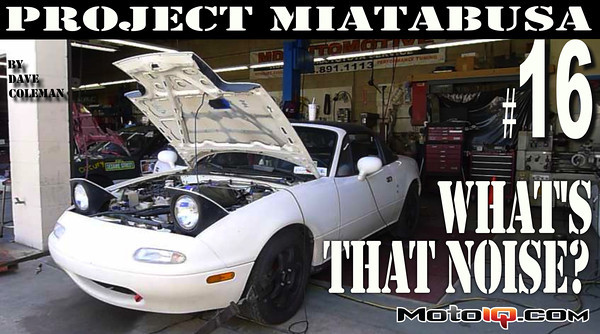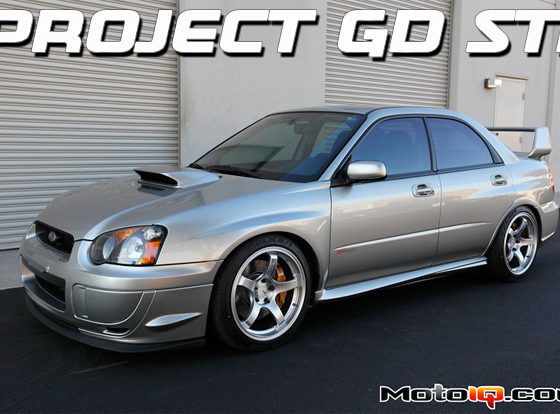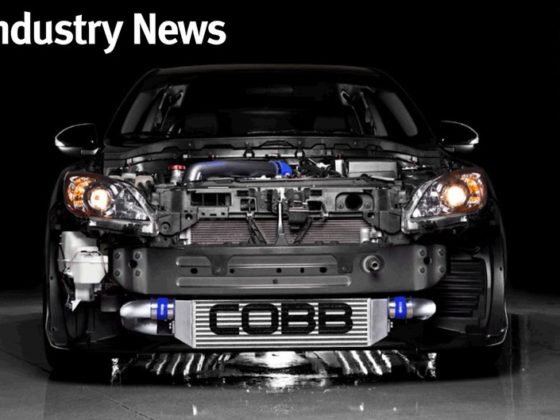,
The second source of torque variation is the inertia of the reciprocating parts. in a normal in-line four with a flat-plane crank (like the Hayabusa's and every car 4-cylinder I've ever heard of), the rather violent acceleration and deceleration of the pistons is all synchronized. With the crank throws are straight up and down, all four pistons are momentarily at a dead stop. 90-degrees later, they're at (almost) their maximum speed. Ninety degrees later, they're stopped again. The energy required to accelerate those pistons comes from the crank, so the crank must slow down as it transfers energy to the pistons, and then speed up again as the pistons come to a stop, transferring energy back to the crankshaft.
The scale of these inertia-driven oscillations is relatively small at car engine speeds, but at bike engine speeds they get to be significantly larger than the combustion-driven variations. We haven't really reached bike engine speeds with this engine yet, since the noise gets so horrible by 6000 rpm we had no desire to rev higher.
(The Yamaha YZF-R1 has been using a cross-plane crank since 2009, where the crank throws are 90-degrees apart instead of 180. This staggers the piston acceleration and drastically reduces this source of toque oscillation. This crank layout results in uneven power pulses, but not only is that less important than the inertia forces at crazy-high revs, but it turns out that uneven power pulses may actually improve the acceleration grip available from motorcycle tires. There's a very interesting analysis of the cross-plane Yamaha crank over on AshOnBikes.com.)
The third, and least predictable source of source of these oscillations is the flexibility of the crankshaft itself. Since cranks are made out of stuff, and all stuff is flexible to some degree, the crankshaft acts like a big torsional spring, deflecting slightly from each power pulse and then springing back and oscillating for a while. Each crank throw does this differently, since each is a different distance from the power takeoff gear that's resisting the torque. Stack up all these different deflections and all the resultant springing, and you've got a pretty unpredictable vibrating mess.
And this, kids, is why we have flywheels. When the reciprocating group needs a bunch of inertia to accelerate some pistons or compress some air, the flywheel is there to provide it. Now, if you put a gear between the crankshaft and the flywheel, interesting things start to happen. Interesting and noisy things.
Zoom in on those gears a bit and think about what's happening:

When power is coming from the crank to the flywheel (during the power stroke or as the pistons are dumping their inertia into the crank), the crank gear is driving the flywheel gear.

When the flywheel is driving the crank (during a compression stroke, or as the pistons are accelerating), the flywheel is driving the crank gear. And since there always has to be a little bit of backlash in every gearset to keep it from binding up, the transition between crank driving and flywheel driving is accompanied by a little “clank” as the gear teeth crash into each other. Add a bunch of these clanks together and you have a thousand hammers pounding the floor right under your ass.
Unless, of course, you have a sprung hub between the gear and the flywheel.

When the crank gear is driving, these springs will compress and store some of that energy. As the net torque output of the crank drops momentarily, the springs release that energy and (hopefully) keep the gear teeth loaded in the same direction.
This didn't happen on our engine, because our primary drive gear looks like this:

Oops…
Yes, after that long explanation of torsional vibration and gear rattle, eliminating the sprung hub was obviously a really dumb idea. And it's not as if we didn't understand the way sprung hubs eliminate gear rattle, we simply forgot about the primary drive gear EVEN AS WE WERE HOLDING IT IN OUR HANDS.
That's right, the thought process was this: the sprung hub is there to eliminate gear rattle, but we're eliminating the Hayabusa gearbox and replacing it with the Miata gearbox, which has its own sprung hub in the Miata clutch disc. No need for two sprung hubs, let's just simplify our lives by connecting the drive gear directly to the shaft. Somehow the only gears we could think about were the ones in the gearbox, since that's where car guys think about gears living.
Put enough clever people in a room together and occasionally their cleverness will cancel each other out…



